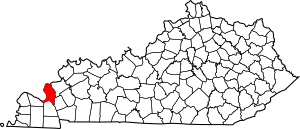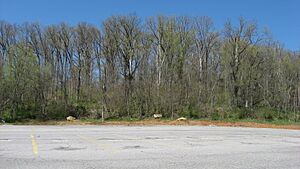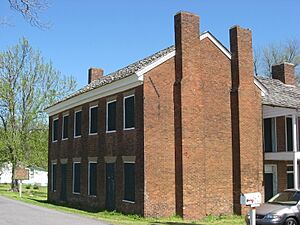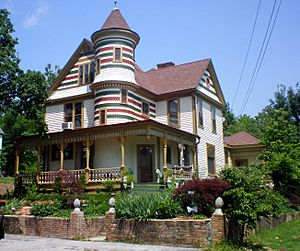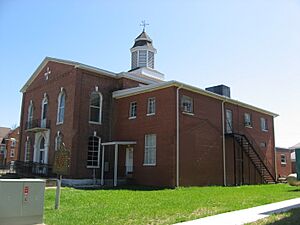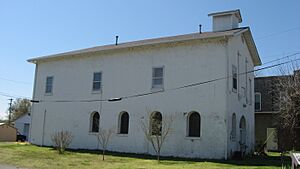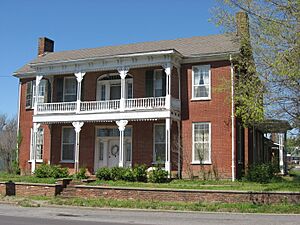National Register of Historic Places listings in Livingston County, Kentucky facts for kids
Welcome to Livingston County, Kentucky! This page is all about some really special places here. These places are so important that they are listed on the National Register of Historic Places. This is like a special list kept by the United States government. It helps protect buildings, sites, and objects that have a lot of history.
Livingston County has 7 amazing spots on this list. Each one tells a unique story about the past. Let's explore them together!
Discovering Livingston County's Historic Gems
Fort Star: A Glimpse into the Past
Fort Star is an important historical site located near Smithland. It was added to the National Register in 1998. This fort helps us understand what life was like a long time ago in this area. It's a reminder of the early days of Livingston County.
Gower House: A Historic Home in Smithland
The Gower House is a beautiful old home on Water Street in Smithland. It became a registered historic place in 1973. Imagine the families who lived here and the stories these walls could tell! Old houses like this give us clues about how people lived and built homes many years ago.
Thomas Lawson House: History in Grand Rivers
In Grand Rivers, you can find the Thomas Lawson House on Wabash Avenue. This house was added to the National Register in 1978. It's another example of the unique architecture and history found in Livingston County. Each old house has its own special design and story.
Livingston County Courthouse: A Center of Community
The Livingston County Courthouse and Clerk's Offices are located on Court Street in Smithland. This important building was recognized in 2011. Courthouses are often the heart of a county. They are where important decisions are made and records are kept. This building has seen a lot of history happen!
Mantle Rock Archeological District: Ancient Stories in Stone
The Mantle Rock Archeological District is a very special place on Kentucky Route 133. It was added to the National Register in 2004. This area is important because it shows signs of ancient human activity. It's also famous for its natural rock shelter. This shelter provided protection for people, including Native Americans during the Trail of Tears. It's a place where you can almost feel the history of those who came before us.
Masonic Hall-Federal Commissary Building: Two Histories in One
At the corner of Court and Charlotte Streets in Smithland, you'll find the Masonic Hall-Federal Commissary Building. This building was listed in 1998. It's interesting because it served two different purposes over time. It was a Masonic Hall, a meeting place for a fraternal organization. It also acted as a federal commissary, which means it was a place where supplies were stored, especially during times of war. Buildings with multiple uses like this often have rich histories.
Richard Olive House: Another Historic Smithland Home
The Richard Olive House is another historic home on Court Street in Smithland. It was added to the National Register in 1982. Like the Gower House, this building helps us understand the architectural styles and daily lives of people from the past in Smithland. It's a great example of the beautiful old homes that still stand in the county.


